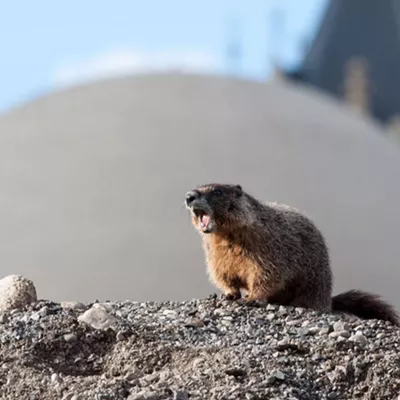"The point of the new rule is to protect public health," says Ron Edgar, the technical services director for the Spokane Regional Clean Air Agency. He says the old rules allowed 65 micrograms (per cubic meter of air) of the smallest particles -- known as PM 2.5, for particulate material 2.5 micrograms or smaller. The new rules set the limit at 35 micrograms.
The tiny particles are kicked loose during combustion when a fire isn't hot enough to fully consume what it's burning, as in wood and field burning. Health officials say the tiny particulates can damage sensitive lungs.
To help Spokane's air meet the standards, the Washington Legislature this year gave Edgar's agency a new tool. For the next two years, the agency can ban burning before the particulate levels hit the new, lower limits.
In years past when the pollution approached 65 micrograms, Spokane air quality regulators asked owners of wood-burning homes to voluntarily put out their fires. When the particulate levels reached the limit, they imposed burn bans.
Now, Edgar says, the agency is allowed to ban burning when it feels that pollution levels will exceed the government standard. Edgar's agency has decided that when particulate levels hit 20 micrograms -- and when the weather calls for stagnant air for at least a few days -- that owners of older, non-government certified (i.e., dirtier-burning) stoves and fireplaces will have to douse their fires. When the particulate levels hit 30 micrograms, burning in all woodstoves will be prohibited.
"We're trying to prevent Spokane from becoming a non-attainment area," says agency director Bill Dameworth. "Once the government gives us that label, it's hard to shake."
Edgar says when a burn ban is called, his agency's inspectors will go looking for dark smoke coming from chimneys.
"Homeowners who have high-efficiency stoves are likely only sending up heat waves," he says. "If we see those, we'll just move on."
The agency has visual smoke guidelines it follows to determines whether a stove is burning cleanly or not. You can see photos of good and bad examples at the agency's Website: www.spokanecleanair.org. Homeowners who don't burn cleanly could be ticketed; first-time offenders could face fines of $400 or more.
"If the woodstove is your only source of heat, we're certainly not going to make you sit and freeze," says Edgar. "We'll work something out."
"We're not trying to be heavy-handed, and we're not trying to make money," says Dameworth. "We're just trying to solve a common problem."















